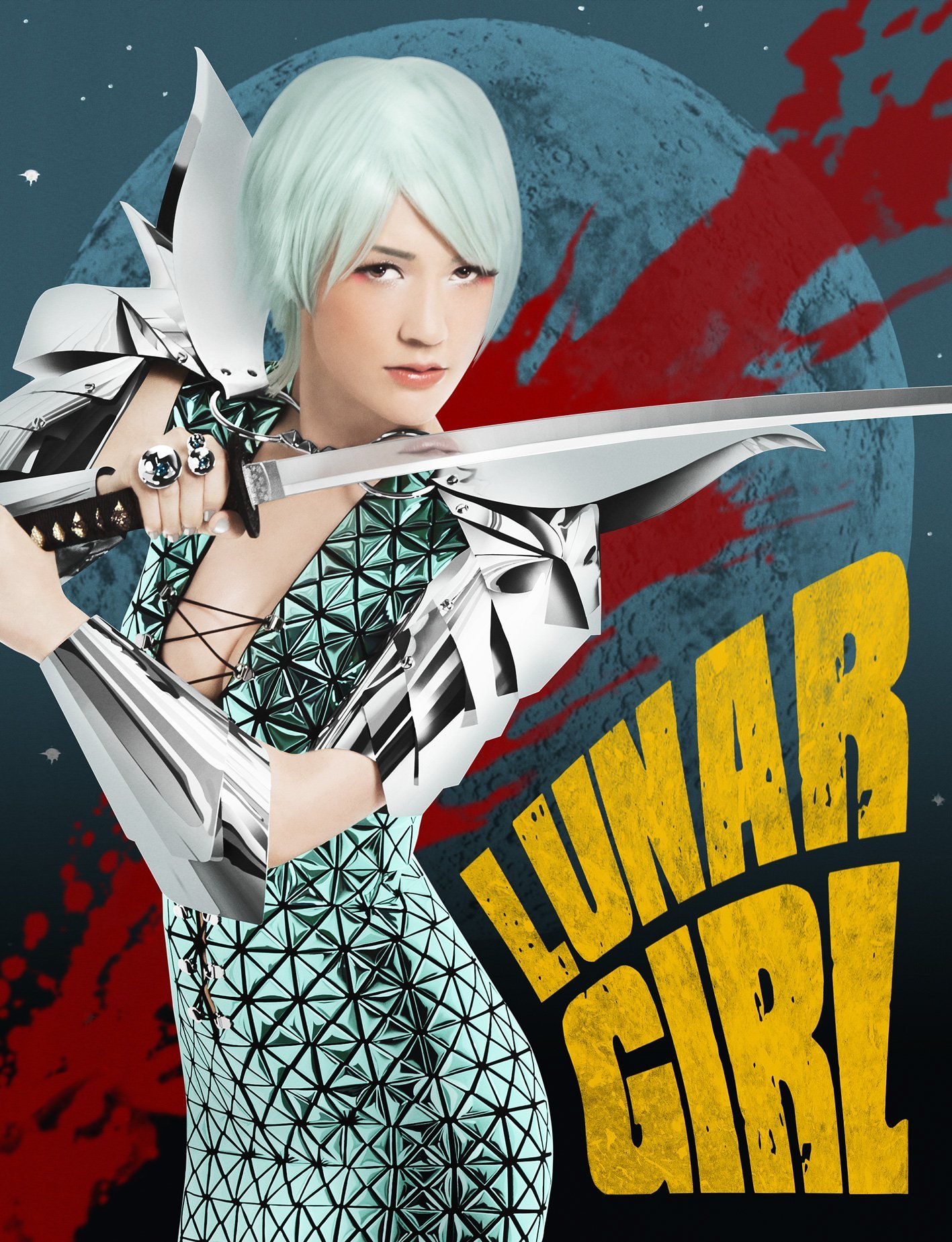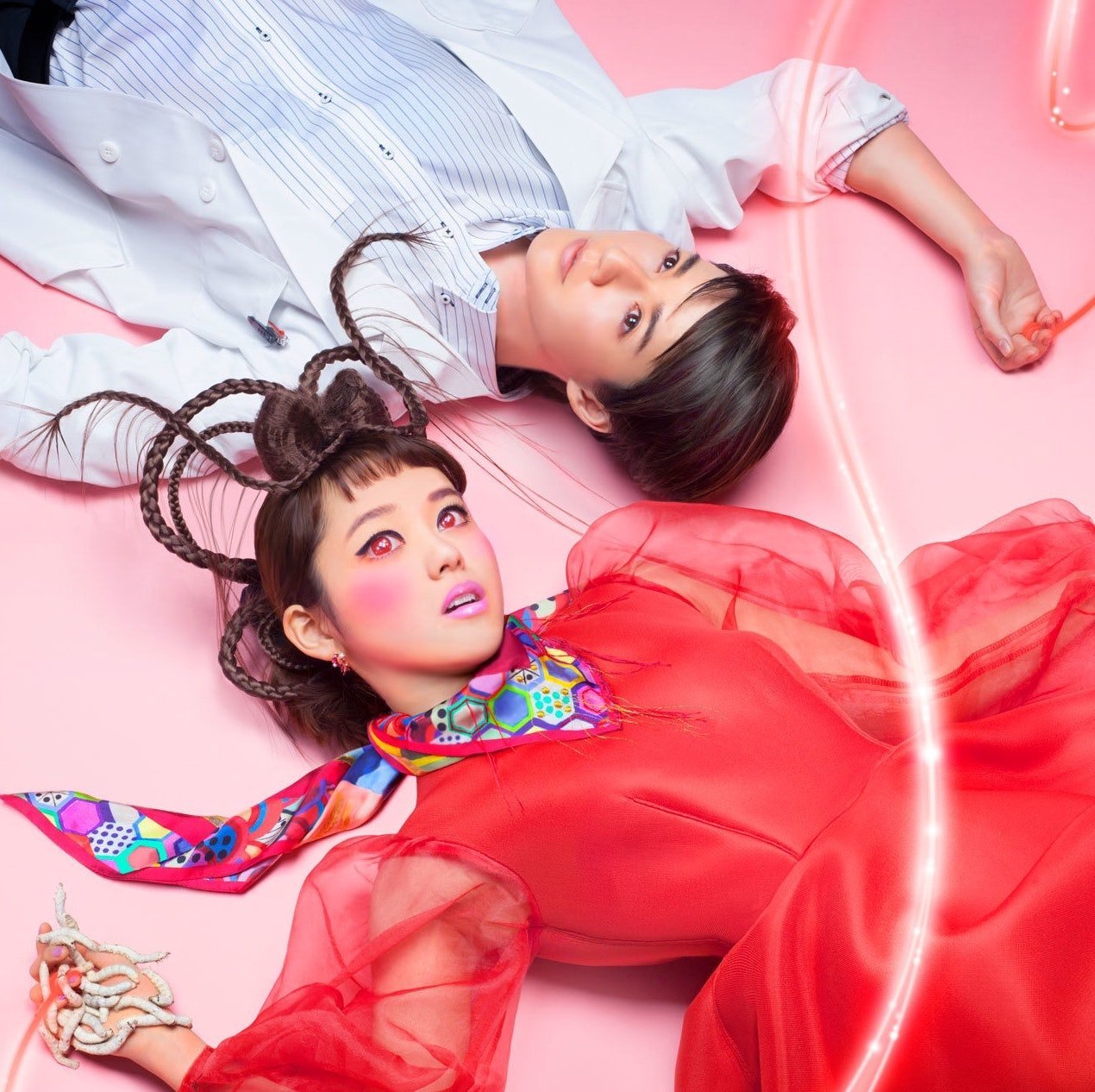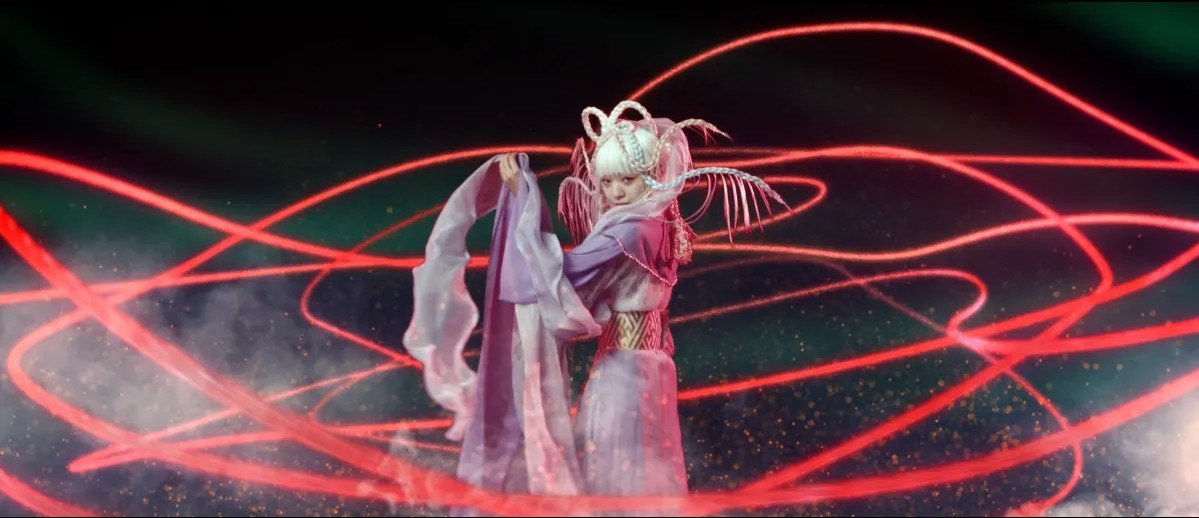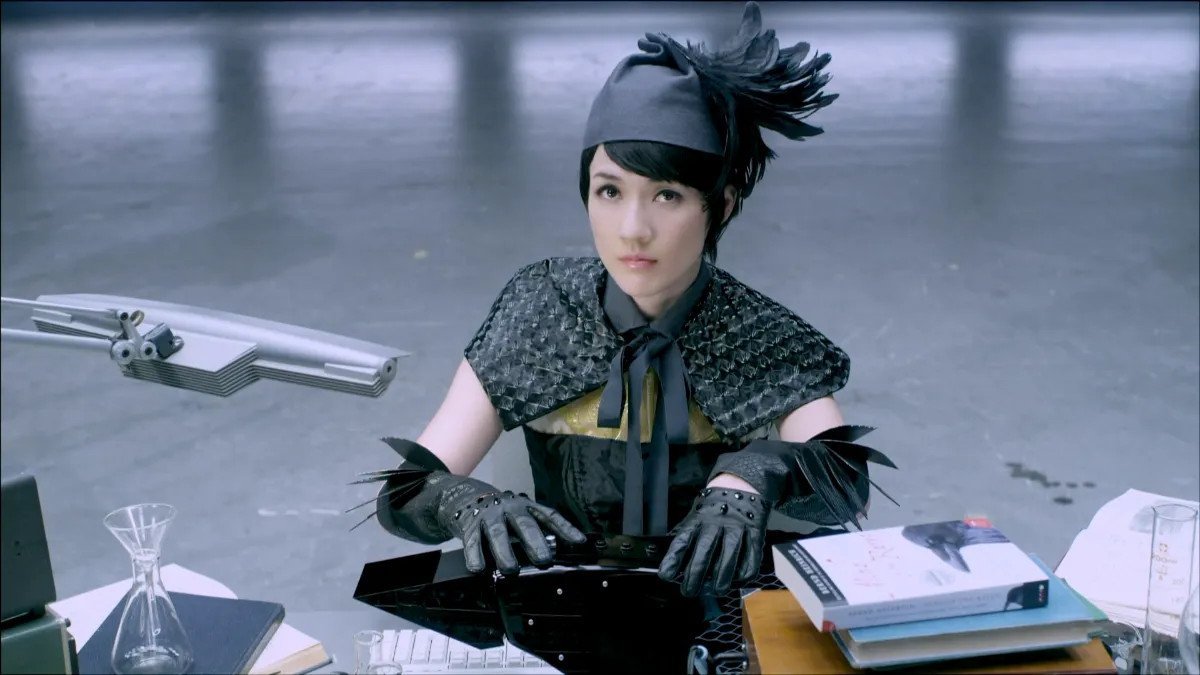BIG IN JAPAN! AN EXCLUSIVE INTERVIEW WITH SPUTNIKO!
Sputniko! Image © the artist
Interviewed by Kate Vass in April 2022.
Kate Vass interviews Hiro Ozaki (aka Sputniko!) about her influences, from MIT Labs to art, film and music, and the cultural experiences that have shaped her life and creative practice.
Her work has been exhibited at the MoMA, Pompidou Metz, V&A, and the Cooper Hewitt, and she was awarded Vogue Japan Woman of the Year in 2013. Sputniko! taught at the MIT Media Lab as an Assistant Professor and was the founder of Design Fiction Group from 2013 to 2017. She is currently an Associate Professor at the Tokyo University of Arts. Sputniko! has also been selected as a TED Fellow and gave her TED Fellow talk in TED 2019. She was also chosen as one of the Young Global Leaders by the World Economic Forum and moderated sessions in Davos 2020. She has had her works included in the permanent collections of museums such as the Victoria and Albert Museum (UK) and the 21st Century Museum of Contemporary Art, Kanazawa (Japan).
This conversation addresses gender inequality issues and explores Hiro’s work retrospectively, including the early artworks like MENSTRUATION MACHINE, 2010. The first installation with a video explores the relationship between identity, biology, and choice while inquiring into the meaning of gender-specific rituals.
THE MOONWALK MACHINE, 2013, where Hiro unravels a story about the protagonist Selena, a young science geek, to change the perspective of how Japanese society overlooks young girls’ potential and the social role of women.
In addition, we look at the RED SILK OF FATE, 2016, which was inspired by East Asian mythology in which gods tie an invisible red string between two people that are destined to be together romantically.
And finally, Hiro shares her thoughts on NFTs, Web3 culture, and more projects. We hope you will enjoy reading this interview and discover her excellent work.
Kate Vass: Hello, Hiro Ozaki; I am thrilled to speak to you and thank you for your time. I hope this interview will enlighten to a broader audience, your creative practice, and your genuinely inspiring artworks. We start with basics, and I wonder about the formation of your artistic name - Sputniko! How did you choose this name, and is there any hidden story behind it?
Hiro Ozaki: Hello Kate, it’s nice to have this chance to speak with you about my work. Actually the name comes from a nickname, ‘Sputnik’, that my high-school friends in Japan used to call me after the artificial Earth satellite launched by the Soviet Union in 1957. I think the nickname had something to do with my interest in science and the fact I was tall and mixed-race, so my Japanese classmates wanted to call me something that sounded more exotic and tech, instead of my classic Japanese name “Hiro”. After learning that it was the first satellite to enter the Earth’s orbit, I added ‘ko’ - a common ending for Japanese female names - and begun my career as an artist under that pseudonym.
Kate Vass: This is great story. Thank you. Could you please share more about your background and how it may affect your work?
Hiro Ozaki: I'm an artist with a tech background. I studied mathematics and computer science at Imperial College London and have also worked as a programmer.
From the time I was studying technology in my university, I was strongly aware of the gender discrepancy in tech and how this affected how society is designed and shaped. I had also grown up in Japan - where gender inequality is very high. When studying, I was thinking of ways in which technology can tackle some of these issues. This is why I decided to make a machine for people who don’t experience biological menstruation.
“Menstruation Machine” was my graduation piece from the Royal College of Art. It was noticed by prominent female curators, Paola Antonelli and Yuko Hasegawa, who loved it and understood it. Their support meant that the work got shown at MoMA and Centre Pompidou-Metz among others. It is still probably my most famous work.
MENSTRUATION MACHINE, unique NFT minted on Foundation accompanied with Full HD 1920 x 1080 Video, and the physical menstruation machine © Sputniko! and Kate Vass Galerie | All rights reserved
K.V: Do you think technology can help to solve gender inequality?
H.: Technology has achieved lots of things. It has even put people on the moon! But other areas are still overlooked. Somehow, people still menstruate every month - bleeding and in pain. I wondered why I had to cope with what seemed to be such a primitive issue when science and technology were being applied to solve so many other things. When I researched, I began to uncover how issues related to women’s health – such as menstruation, pregnancy and menopause - are often overlooked or ignored.
I made the piece as a way to start a discussion. I thought: ‘Well, what if people who don’t menstruate are able to understand how difficult it can be through this device? Can we have a discussion and talk about this issue? Menstruation is still treated as a taboo, something we don’t talk about. It is something hidden away when it affects half the population on the planet! This was even more true in 2010, when I made the work.
Nowadays, people talk about menstruation a lot more. Even in Japan, you can see discussions about it in the media. But back in 2010, there was this strong taboo. In fact, I’m not going to say which museum, but when a curator tried to get a very prestigious museum to collect the piece, there was some resistance from the men on the collecting committee. It’s interesting. It’s changed a bit now but still not enough.
K.V.: For the Menstruation machine, there is a music video, as for the rest of your later works. How did you start making those videos and music?
H:. I like making narratives and film. I grew up in Japan so I'm familiar with Japanese pop music, pop culture and anime culture. When I made this work, Web2 was coming out – YouTube, Twitter and so on. I was an art student with no money, no connections and YouTube felt like the perfect gallery space for me to show my work. I’m also a musician and write music, so it made sense to produce music and video to show on YouTube. So that’s what I did: I made a music video and I posted it to show people.
Growing up in Japan, I had always loved Japanese pop culture but had felt annoyed about how they portrayed women, or the way LGBTQ characters were portrayed. A lot of female characters are presented as very powerless, cute and dumb. I wanted to infiltrate Japanese pop culture spaces and make a new pop symbol who was strong or quite complicated – who has complicated needs. So I decided to make a very pop music music video to explore this.
MENSTRUATION MACHINE (2010), by Sputniko! © Sputniko! and Kate Vass Galerie | All rights reserved
KV: But the character in the video is male?
H.: I created Takashi – a cis-gendered male character who wants to experience menstruation. Takashi decides to build a menstruation machine to wear it himself and menstruate. The character sort of crosses gender binaries. When I made a video about this and put it on YouTube, it went viral. I think it was, in part, because I myself was acting as a man who wanted to experience menstruation. There were a lot of articles asking whether this crazy artist called Sputniko! was male or female. It was interesting.
KV.: So, everyone thought you were a man and totally confused your gender?
H.: Yes, I think some Japanese viewers of my work at first assumed that I was a guy who wanted to build the machine. After a while, my other video works also started to gain coverage and popularity in Japan, and Vogue Japan awarded me ‘Woman of the Year’ in 2013. I thought I had successfully infiltrated Japanese popular culture because I had been able to address my annoyance with issues of technology and gender inequality in a very public way.
K.V.: So, what would be the second most potent work to touch on feminism?
H.: For me, “Moonwalk Machine” or “Tokyo Medical University for Rejected Women”. In “Moonwalk Machine”, I created this work featuring a main character, Selena, who wants to travel to the moon. It has been more than fifty years since the moon landing but only twelve white men have walked on the surface of the moon. No women have ever walked on the moon. Selena really wants to go to the moon and she decides to make and launch her own Moon Rover that leaves these superhero, Sailor Moon-like footprints on the surface of the moon.
K.V.: It's like a challenge…
H.: It’s kind of like a challenge – a DIY teenage space enthusiast who is trying to build her own machine. It was a work I created because of my background in science and tech. Growing up in Japan, few women study science, technology and engineering subjects. I felt like I wanted to encourage young girls around the world who want to study these subjects.
THE MOONWALK MACHINE - SELENA'S STEP (3/3), NFT accompanied Full HD 1920 x 1080 Video and 3D Model © Sputniko! and Kate Vass Galerie | All rights reserved
KV: I was astonished once I researched the topic of gender inequality in Japan. We all have our associations with foreign countries, and from the western perspective, Japan was always a highly developed country, both culturally & economically. However, it shows that gender equality keeps making headlines in Japan, despite well-publicised policies promoting women's representation in society. And despite any initiatives, Japan is still at the end of the global gender equality rankings; I think it's 120th out of 153 countries in terms of gender parity!
H.: Yes, the mindset is still very outdated and conservative. Japan is a technologically advanced country full of male-dominated professions and workplaces. It is difficult for women to speak up and be active in those spaces. Growing up as a woman in Japan is very challenging. Things have changed a lot in the last ten years – thanks to movements like MeToo. But at the same time, there still hasn’t been enough change.
When I made Moonwalk Machine in 2013, I created this young girl character who is really into science and builds her own machine and launches it into space. Unfortunately, it is still rare to see a super-intelligent girl with a vision and building something on her own, portrayed in Japanese popular culture. I wanted to feature a character who loved science and tech and who made her own machine to achieve her dreams.
K.V.: What is your message towards the teenage girls? Is it a happy-end story? Do you encourage them to hold on to their dreams?
H.: Eventually she does succeed in her experiment. But the video doesn’t show her going to the moon. I think the message is: Don’t give up and keep trying. She actually puts a footprint of her high heel footprint on top of the photo of Neil Armstrong’s footprint. There is also this response to male-centric histories of science. ‘A giant leap for mankind’ is a kind of white, male-centric history of progress which Selena tries to overwrite with her own footprint. So that’s the kind of message I wanted to get through.
K.V.: It is a very positive motivational message. I like that. (smiles). This was the first work you sold as an NFT, right?
H.: Yes. Last year, in Japan’s first NFT art auction, I sold an NFT of “Moonwalk Machine - Selena’s Step” alongside the physical machine, photo panel and high-resolution video. It sold for the highest price on the day at 8.4 million yen (65000 USD). Since then I have sold the NFT of another edition of “Moonwalk Machine” to a Japanese collector for 25 ETH and the NFT of “Menstruation Machine” for 50 ETH. A lot of people know about these works. The 21st Century Museum of Contemporary Art in Kanazawa collected “Moonwalk Machine” for their permanent collection and it was shown in Pompidou along with “Menstruation Machine”.
THE MOONWALK MACHINE - SELENA'S STEP (2013), by Sputniko! © Sputniko! and Kate Vass Galerie | All rights reserved
K.V.: So "Moonwalk Machine" is another one of your most famous works. And then, in terms of feminism, there's another work called "Tokyo Medical University for Rejected Women", the project you did in collaboration with another female artist - Tomomi Nishizawa, correct?
H.: Yes, this was another piece that was created out of outrage at the state of gender inequality in Japan. We created a fictional university called “Tokyo Medical University for Rejected Women”. In 2018, there was a big scandal in Japan when it was found out that medical schools were deducting points from female applicants’ test scores to lower the number of women admitted.
K.V.: It sounds like a horror story.
H.: A Japanese-style horror story!
This was in the news in 2018 – in twenty-first century Japan and only three and a half years ago. We made the piece to criticise the system. We created this fictional school to say we needed a university for rejected women because women are not allowed to go to medical schools.
The excuse the medical schools gave was that Japan doesn’t have enough doctors. They said, even if they educate women, the women get married and quit. So, in their view, there was no point in educating women. That's what they really said. “If we have too many female students, we're not going to have enough doctors in Japan”. Crazy.
KV: So the reason is not to educate and invest in women and save the positions for men, even though they lack doctors? Is it because women tend to leave their jobs after having children?
H.: Perhaps because they may take maternity leave or the childcare demands - placed on working mothers especially – will make it difficult. But there are many talented female doctors in Japan. It’s not an excuse to reject female applicants and decide their future for them. To deduct points systematically like that!
So, we made a fake school and the work is full of very dark humour. We made a school to gather all these women who were rejected from these medical schools, so the women can build the perfect male doctor in robot form – the doctors Japan loves – and deliver them around Japan so that Japanese medicine can progress. Their desire is to help Japan’s medical profession progress, even if they are rejected, and their talents shouldn’t be wasted. They are working hard to make these men. There are drones that deliver these perfect, male doctors around Japan. It’s very tongue-in-cheek. We made a university leaflet too. It shows men waiting to be turned into the perfect, male Dr. Robot.
TOKYO MEDICAL UNIVERSITY FOR REJECTED WOMEN, a collaboration project with artist Tomomi Nishizawa © Sputniko! and Kate Vass Galerie | All rights reserved
K.V.: So witty. Love it. (smiles)
H.: We also created an “open campus” exhibition of the university. There are male doctors being delivered across Tokyo in the sky. In my work, I tend to play a lot with humour. We made it just like an open campus where you can see the video and it’s very cheesy - there is me as the president of the university, welcoming you. So that is another one of my works related to technology with feminist themes.
K.V.: Is this work for sale as a NFT?
H.: We are still negotiating on this point but are open to interest in the work.
K.V. How popular are NFTs in Japan? I noticed that you have only a few NFTs minted in recent years. Do you hesitate to fall under the mainstream of NFT culture?
H.: Yes, I started quite late, but I’m actually very early in Japan! Interestingly, NFTs are still not very widespread in Japan yet. Very few people own a wallet and very few artists are working in the space. I think it’s partly because most of the information about NFT/Web3 is in English and a lot of people in Japan are not fluent in the language.
It’s true that since last year, there has been a lot of buzz surrounding NFTs and their implication on the art world. However, I was busy with starting my new women’s health startup so I didn’t have an opportunity to properly explore the area. I only began to learn more about NFTs when my close friend, artist Emi Kusano (founder of NFT Collection Galverse), devised a summer project for her eight-year old son in which he would post NFTs of his drawings. His drawings, under his artist name Zombie Zoo Keeper, became popular among some circles of NFT collectors, and it was widely reported in the Japanese media.
Then in October, I was invited to participate in the first NFT art auction held in Japan by SBI Art Auction. Since then, the interest in my work and the possibilities NFTs offered me as an artist really pushed me to start exploring the NFT space.
K.V.: How do you feel about Web3 culture and how do you think we can use this to fight gender inequality?
H.: When the NFT of my work was sold in last year’s auction, it was as if everything had come together and I saw how NFTs solved an issue I, and some other artists, had been wrestling with for some time: why, in a digital world, was digital art SO difficult to sell? As a digital-native artist, I had always wondered about this gap. Most people first encounter my work online. Maintaining an online presence and participating in online communities have always been an important part of my career as an artist. And yet, I had to conduct almost all my business surrounding my work in the physical spaces of art fairs and galleries. There was just not enough infrastructure for artists to exhibit and make a living in the digital space. Now NFTs offer not only the digital platform but also new ways for artists to possess ownership of their work.
However, currently not everyone is benefitting from what the NFT world has to offer artists. One market report found that only 5% of total NFT sales are by female artists. This fits within the larger picture of crypto’s industry-wide gender-gap. But the NFT space is still relatively small enough that increasing participation from currently marginalised artists could lead to real change. There are multiple initiatives being taken to get more women involved in NFT art and make Web3 culture more inclusive. Pussy Riot and UnicornDAO have been taking steps to address this and they recently commissioned me to create a new piece for them. I am currently interested in how gender and bodies are represented in Metaverse. Wouldn’t it be interesting if avatars were able to wear the Menstruation Machine and menstruate in the Metaverse? These are some of the ideas I have been exploring recently. I am also interested in the expressive potential of generative NFTs and I will be showing another new work at the Bright Moments London exhibition this July. I am looking forward to seeing how NFTs can be used to empower marginalised artists and represent their point of view in Web3.
RED SILK OF FATE – TAMAKI’S CRUSH (1/3), NFT minted on Foundation accompanied with Full HD 1920 x 1080 Video and 3D Model © Sputniko! and Kate Vass Galerie | All rights reserved
KV: Thank you, Hiro. I wanted this conversation to cover the gender equality angle of your creative practice. However, I am also a big fan of your other projects: Red Silk of Fate and Crowbot Jenny. Could you please briefly talk about those? I would like the audience to learn about them too.
H: Red Silk of Fate emerged out of my interest in the relationship between biotechnology and mythology. The two are often seen as opposing or that through biotechnology, humans are entering into the realm of the gods. I was interested in what was happening in recent research and how biotechnology can create new mythologies for the future. In East Asia, there is a mythology surrounding a red thread of fate that connects to two people destined to be together romantically. In this work, I collaborated with scientists to see if we can recreate this mythology through biotechnology. By genetically engineering silkworms to produce oxytocin, a socially-bonding hormone, we were able to re-create something that we thought could only exist in mythology.
Red Silk of Fate - Tamaki’s Crush is a video that explores this future bio-mythology featuring the character Tamaki, a young aspiring bioengineer, who creates the Red Silk of Fate to pursue her crush in the same lab. I wrote the script, music and starred in the video. I also created a permanent exhibition in Teshima in the Setouchi area of Japan called Teshima 8 Million Lab - a facility that is a lab where Tamaki resides and works as an actual shrine for love and connection. There are wish boards for people to write up their wishes about love and amulets for luck in love. Recently in 2021, I collaborated with Napp Studio to create Red Silk of Fate - The Shrine, an installation in Hong Kong using genetically-engineered red silk of fate, which was very popular. I have received a lot of interest and requests to show the work and it proved to be a big success in Asia, where a lot of people are familiar with the mythology.
RED SILK OF FATE – TAMAKI’S CRUSH (2016), by Sputniko! © Sputniko! and Kate Vass Galerie | All rights reserved
KV: RSOF is a romantic story, but at the same time, horrifying one if you think that bioscience can recreate living things or create new ones which we believed to only exist in the mythical, magical worlds. What is the message you wish to bring with this work?
H: I know it is quite controversial as an idea but I was quite amazed at how far humans have progressed. Artists can come up with an idea like this and when we collaborate with scientists, we can engineer something that previously could only exist as mythology. When I worked on the permanent installation in Teshima, I also discovered that compared to other religions, Japanese Shintoism is more relaxed about technology and topics such as bio-engineering. This permanent exhibition looks into the different ways we can interact with these new, emerging mythologies at the intersection of science and art.
KV: At the end of the video (RSOF), the main character does not respond to the ‘spell’; what are you trying to say through this ending?
H: When writing the script, I did a lot of research into Japanese and Greek mythologies for example. Often in these mythologies, very crazy things happen to the characters so I wrote the script for the video with this in mind. At some point in the story, strange, mythical powers start to inhabit Tamaki’s creation. I guess the video explores the fact that none of us really know where the future of biotechnology may take us.
RED SILK OF FATE – THE SHRINE (2021), exhibited at PMQ 元創方, Hong kong, a collaboration project with Masaya Kushino and Napp Studio © Sputniko! and Kate Vass Galerie | All rights reserved
KV: For this work you have collaborated with an incredible Japanese designer Masaya Kushino on the fabric design, the fabric seems very special. Is it real that you can only see the embroidery that only reveals itself under blue (moon) light, and its colours are only visible through the lenses offered inside the shrine?
H: I have collaborated with Masaya Kushino on a number of works and we work as a collaborative team entitled Another Farm. When Red Silk of Fate - The Shrine is seen through the filter lenses, the glowing quality of the embroidery is revealed to the viewer and you can realise the full effect of the work. When we engineered the silk with Hideki Sezutsu from the University of Tokyo, we not only engineered the silkworms to produce oxytocin but we also used the genes of a red-glowing coral to make the quality of silk closer to how I imagined the mythical red silk of fate.
KV: Fascinating. Thank you.
Last, but not least. I want to cover Crowbot Jenny, one of earlier works from 2011 and the diversity of problematics you raise in your art.
CROWBOT JENNY (1/3), NFT minted on Foundation accompanied with Full HD 1920 x 1080 Video and 3D Model © Sputniko! and Kate Vass Galerie | All rights reserved
H: I first came up with the idea for Crowbot Jenny when I was attending the Royal College of Art in London. I was interested in designing robots and the topic of interspecies communication. You see a lot of robot-to-robot or robot-to-human communication but not a lot of interaction between robots and non-human species. I collaborated with Professor Nicola Clayton to research animal communications and that’s when I discovered how diverse crow languages are. Taking samples of different crow calls and putting the sound files in a crow-shaped robot, I was able to test this ‘crowbot’ in several parts of London and found that crows did respond to the calls produced by the machine. After creating the prototype of the crowbot, I devised Jenny - the character I imagined to be the designer of the machine. She is not keen on communicating with other humans so she chooses to create this machine to talk to crows. She is the protagonist of the music video that also features music written by me. Crowbot Jenny was shown in MOMA in 2011.
KV: In Crowbot Jenny the theme is about the generation's tendency toward communication overload, troubles relating to common peers, and not being able to understand each other. It's disturbing to see many people unable to connect/communicate with each other anymore and to my opinion, it this issue increases every year, particularly after the pandemic. Do you think technology like metaverse can help increase this problem even more in this sense or vice versa help to connect?
H: I prefer being able to spend time in person with my immediate family but these days when I communicate with work colleagues and friends, I find that the difference in depth of interaction between physical and digital is lessening. There are a lot of people who I feel very close to even though we have never met in person, because we communicate so much digitally.
CROWBOT JENNY (2011), by Sputniko! © Sputniko! and Kate Vass Galerie | All rights reserved
It’s true that platforms like Twitter and Discord are creating communication overload for a lot of people in 2022, but I don’t think that is particularly solving issues of loneliness. Even if you have 100,000 followers, if you feel like you are not close to anyone, or you are not cared for by anyone, you can still feel very lonely. Technologies like the metaverse and social media are merely platforms to meet someone who you might feel close to, but you also might be able to do the same by going to a local pub or attending a party. To solve loneliness, the quality of interaction matters so much more than quantity. Social media allows for more quantity, but you need to be lucky to find quality there.
KV: Thank you, Hiro, for the time, it has been a great conversation, and I am looking forward to working with you!
H.: Thank you, it was great speaking with you!
All the works mentioned in this interview are linked to the artists' pages and store, where you can browse and add one to your collection. If you have any questions, please leave a comment, and we will be happy to follow this in our following interview with Hiro or send you more information directly.
thank you,
Kate












